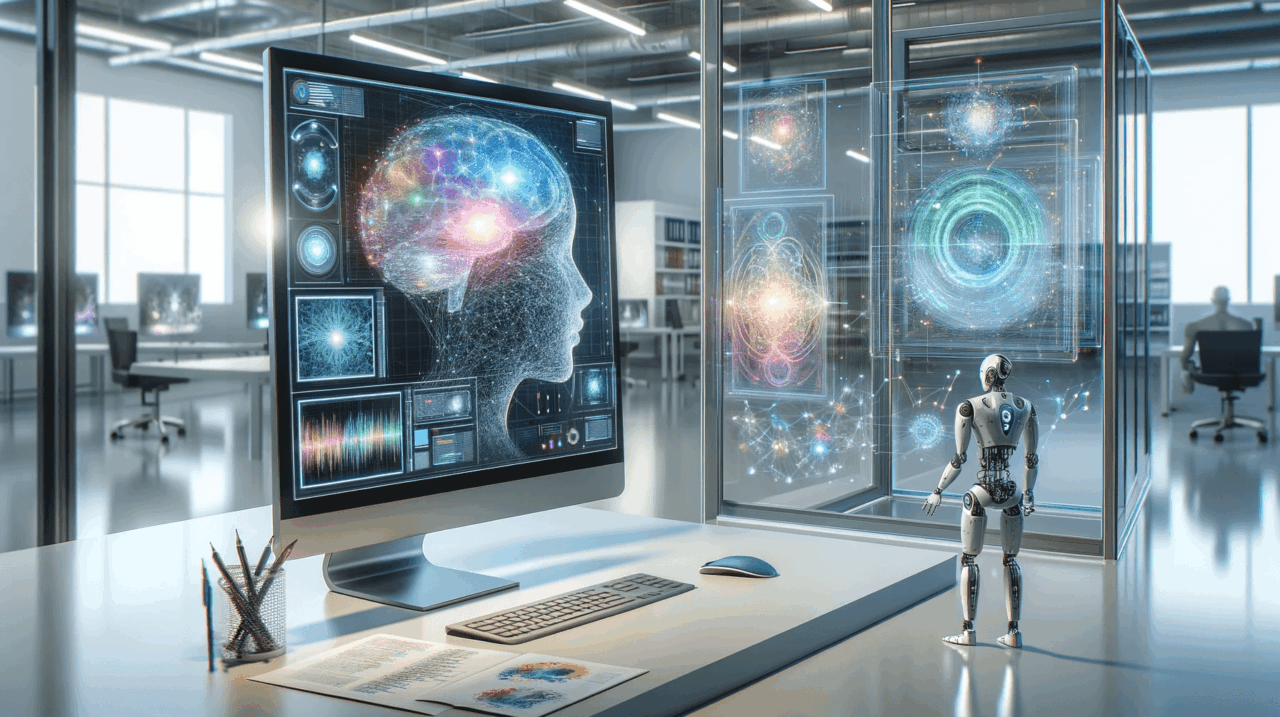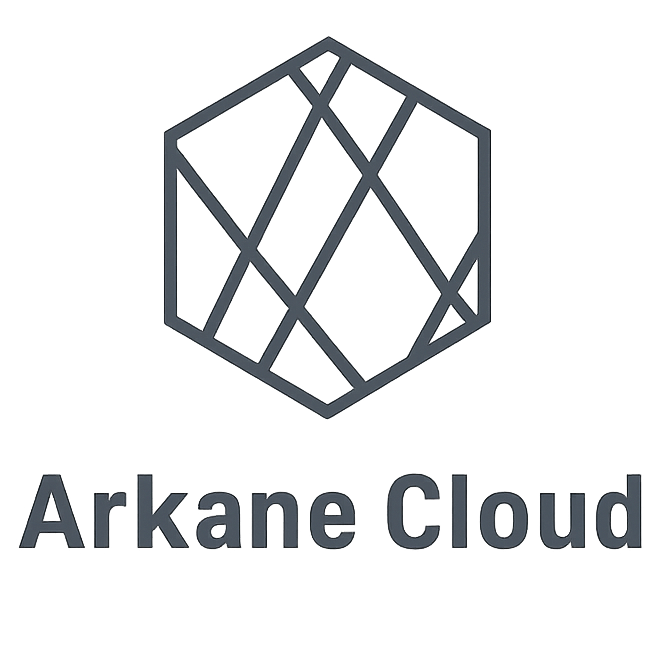Renting GPUs for Data Analysis and Big Data Processing

Introduction
The landscape of data analysis and big data processing is undergoing a significant transformation, primarily fueled by the increased adoption of Graphics Processing Units (GPUs). Historically, Central Processing Units (CPUs) have been the backbone of computational tasks in advanced analytics. However, the ever-growing complexity and volume of data, coupled with the need for faster processing, have steered the focus towards GPUs. Unlike CPUs, GPUs are designed to perform rapid calculations and handle massive parallelism, making them ideal for video rendering and, increasingly, for a broader range of data processing tasks.
The shift towards GPU computing in data analysis is not merely a trend but a strategic pivot to harness more computation power. This transition is driven by the GPUs’ ability to efficiently handle vector calculations, which are commonplace in data science, particularly in machine learning. The burgeoning datasets, along with a surge in unstructured data and more intricate statistical analyses, have made computational power a critical asset in the data science toolbox. A telling example of GPUs’ prowess is in genome sequencing – a task that once took days on CPUs now takes mere minutes on GPUs.
The advantages of GPUs are manifold. Their capability for massive parallel processing and high-speed computations, especially for repetitive tasks like combinatorial problems, positions them as a valuable resource across various industries. The decreasing hardware costs of GPUs further enhance their appeal, making them a viable solution for accelerating existing use cases and fostering new applications in data analysis and processing.
Yet, the integration of GPUs into data analysis is not just about replacing CPUs. It requires a nuanced understanding of the technology and a strategic approach to application. For optimal effectiveness, GPUs should be integrated into operations in a phased manner, beginning with enhancing productivity and performance, followed by improving infrastructure performance, and finally, focusing on sophisticated applications like machine learning innovations.
One of the most profound benefits of GPUs lies in their ability to significantly accelerate iterative development in machine learning. With GPUs, tasks like training machine learning models become substantially faster and more accurate. This accelerated development cycle is not just a matter of efficiency but also opens up new possibilities for complex data analysis tasks. For instance, in predicting the spread of a pandemic, GPUs can enable scalable semantic parsing for high-quality natural language interactions – a feat challenging to achieve with traditional models.
The impact of GPUs extends to the improvement of infrastructure performance in data lakes, machine learning environments, and model training and production setups. These environments, often comprising technologies from different eras, can face performance constraints. GPUs help overcome these constraints by centralizing data sets into core GPU memory, streamlining the entire data pipeline, and enhancing productivity by avoiding memory-copying operations between disparate data frameworks.
Lastly, the most conspicuous application of GPUs is in deep learning. This subset of machine learning, which involves structuring algorithms to create an artificial neural network capable of autonomous decision-making, has found GPUs to be integral in processing both unstructured and structured data. The challenge of processing tabular financial data, for instance, becomes more manageable with GPUs, which facilitate automated data augmentation, thus unlocking new capabilities in sectors like retail and e-commerce.
In summary, the adoption of GPUs in data analysis and big data processing represents a paradigm shift in how we approach computational tasks. Their ability to handle large volumes of data at unprecedented speeds and with greater accuracy is not just transforming the field of data science but also redefining the possibilities within it.
The Evolution of GPU Computing in Data Analysis
The journey of GPUs from a specialized tool for graphics rendering to a pivotal force in data analysis and big data processing is a tale of continual adaptation and innovation. This evolution is deeply intertwined with the broader shifts in business intelligence, analytics, and the growing complexity of data.
Historical Perspective
Originally, GPUs were developed to enhance graphics performance in the gaming industry and other visual applications. This was a response to the limitations of CPUs, which processed information linearly and struggled with the demands of rapidly evolving graphics technologies. The game-changing idea was to develop entire images in memory in the form of a matrix, significantly improving graphics performance. This marked the genesis of what we now know as GPU processing.
The Nvidia GeForce 256, introduced in 1999, was a seminal moment in GPU history. It popularized the GPU, initially focusing on gaming, but soon its potential for wider applications began to be recognized. The GPU’s matrix multiplication capabilities, essential for high-performance graphics, were found to be equally beneficial in the realm of data analysis, particularly with the advent of deep learning.
The Shift Towards Data Analysis and Big Data
As deep learning and machine learning began to take hold in data science, the parallel processing capabilities of GPUs became increasingly valuable. Deep learning, which utilizes neural networks that mimic the human brain, found a natural ally in GPUs. The ability to perform matrix calculations at scale and with high parallelism made GPUs ideal for the neural networks used in deep learning.
Beyond deep learning, GPUs have proven to be well-suited for processing and analyzing geospatial data, which typically uses a matrix format. The growth of IoT networks, with vast numbers of connected devices generating operational data, has also spurred the integration of GPUs into broader data analysis applications.
Today, a variety of sectors, including telecommunications and utilities, are leveraging GPUs to manage and analyze the large volumes of data generated by modern infrastructure like cell towers and smart meters. The oil and gas sector, for example, utilizes GPUs to process the massive amounts of data produced during exploration and production phases. In these sectors, the ability to rapidly analyze complex datasets is not just a matter of efficiency but a critical business need.
The ongoing evolution of GPUs in data analysis is marked by their expanding role beyond traditional applications. Startups and established tech companies alike are exploring new ways to integrate GPUs into their data analytics and database systems. This broadening of GPU applications is reshaping the landscape of data analysis and opening up new frontiers in big data processing.
In essence, the evolution of GPU computing in data analysis reflects a broader trend of technological adaptation, where tools initially designed for specific purposes find new life and utility in unanticipated areas. This adaptability not only underscores the versatility of GPUs but also illustrates the dynamic nature of technological innovation in data science.
The Advantages of Renting GPUs for Data Analysis
The landscape of data analysis and big data processing has been profoundly impacted by the advent and evolution of GPU computing. Renting GPUs, in particular, has emerged as a preferred option for various users, from companies to individual researchers, due to several compelling advantages.
Cost-Effectiveness
One of the primary benefits of renting GPUs is cost-effectiveness. The high price of GPUs, which can range from a few hundred to thousands of dollars, makes outright purchase a significant investment. Renting GPUs eliminates this upfront cost, allowing access to powerful computing resources without the financial burden of purchasing. Additionally, renting avoids the depreciation in value that GPUs typically experience over time, offering a more financially viable option for users who require high-performance computing for tasks like data science, machine learning, and large-scale blockchain processing.
Scalability and Flexibility
Renting GPUs also offers unparalleled flexibility and scalability. Users can rent high-performance GPU hardware for short periods, which is ideal for small projects or experimental work. This approach allows for testing different GPUs and finding the best fit for specific project requirements. Cloud GPU providers often include features like easy data transfer and remote access, enhancing the user experience. The ability to scale configurations up or down as needed, and the option to add memory and performance to the technology stack, make GPU renting an adaptable solution for varying computational demands.
Access to Latest Technology
Another significant advantage of renting GPUs is staying current with rapidly changing technology. In the fast-paced world of electronics, new and improved models are continuously introduced. Renting GPUs ensures access to the latest technology without worrying about maintenance, upgrades, or obsolescence. This aspect is crucial for keeping data analysis and processing infrastructures relevant and efficient.
Reduced Research and Decision-Making Time
Renting GPUs also simplifies the decision-making process. Instead of spending extensive time researching and comparing products, users can rely on rental companies to provide well-curated, high-quality options. This approach reduces the time and effort required to make informed decisions about which GPUs to use for specific data analysis tasks.
In summary, renting GPUs offers a cost-effective, scalable, and flexible solution for data analysis and big data processing needs. It allows users to stay abreast of technological advancements and reduces the time and effort required in selecting appropriate hardware, making it an increasingly popular choice in the field of data science.
How GPUs Enhance Data Analysis and Big Data Processing
The impact of GPUs on data analysis and big data processing is nothing short of revolutionary. Their unique capabilities have significantly transformed how data is processed, analyzed, and utilized across various fields and applications.
Accelerated Performance
GPUs have redefined computational efficiency, especially in complex, distributed environments where speed is paramount. Their ability to perform parallel processing enables substantial improvements in computational speed, which is particularly beneficial for data science and machine learning applications. For example, in machine learning, the iterative development process has been drastically accelerated, with cycle times reduced by up to 50 times. This efficiency is not just about speed but also about enhancing the accuracy and reliability of tasks like training machine learning models.
One practical application of GPU power is in epidemiological modeling, such as predicting the spread of diseases like the flu. GPUs facilitate scalable semantic parsing and enable the analysis of large data sets, such as search data related to flu symptoms, to model disease spread accurately. This massive parallel processing capability is essential for tuning complex models that traditional computational methods would struggle with.
Infrastructure Optimization
The integration of GPUs into data lakes, machine learning environments, and model training frameworks has significantly optimized infrastructure performance. By locking data sets into core GPU memory, GPUs allow for a more centralized and accessible resource across the entire data pipeline. This approach not only improves system-level performance but also fosters a more uniform data-processing pipeline, free from the constraints of traditional business intelligence and data architecture. The key productivity gains here stem from reducing memory-copying operations between disparate data frameworks, enabling more efficient data processing from ingestion to production.
Deep Learning and Data Profiling Enhancements
GPUs are instrumental in the realm of deep learning, a subset of machine learning that creates artificial neural networks for autonomous decision-making. This application is particularly effective for unstructured data, which constitutes a large portion of today’s data landscape. GPUs simplify the processing of complex data sets, including tabular financial data, by enabling automated data augmentation and addressing challenges like missing values and data normalization.
In addition to deep learning, GPUs play a crucial role in data profiling, dependency analysis, and data anonymization. Their processing power significantly speeds up tasks like grouping and aggregation, making activities run hundreds of times faster than without GPU support.
In summary, GPUs have become a cornerstone in the field of data analysis and big data processing. Their ability to accelerate performance, optimize infrastructure, and enhance deep learning and data profiling applications exemplifies their transformative impact on the world of data science.
Case Studies: Transformative Impact of GPU Renting
The transformative impact of GPU renting in data analysis and big data processing can be best illustrated through diverse case studies. These examples reflect the substantial improvements in efficiency, accuracy, and innovation that GPUs facilitate across various industries.
Business Applications
One of the most striking examples of GPU utilization is in machine learning, particularly in the iterative development of models. Companies have reported a dramatic acceleration in the iterative development process, with cycle times being reduced by up to 50 times. This acceleration is particularly noticeable in tasks like training machine learning models, which can now be completed more quickly and accurately.
A specific case study in this domain involves the prediction of pandemic spread, such as the flu. Using GPUs, researchers achieved scalable semantic parsing for high-quality natural-language interactions, a task difficult for traditional models. This capability enabled them to comb through search data related to flu symptoms and compare various models for pandemic spread to identify the best fitting one. The massive parallel processing capability of GPUs was crucial for tuning the underlying transport model in these studies.
Scientific Research and Development
In scientific research and development, GPUs have been instrumental in optimizing existing technologies and frameworks. Present-day data lakes, machine learning environments, and model training and production setups often comprise technologies from different eras, which can constrain performance. GPUs address this by centralizing data sets into core GPU memory, thereby streamlining the entire data-processing pipeline from ingestion to production. This optimization is particularly valuable for improving infrastructure performance in data-intensive fields.
Retail and E-commerce
In retail and e-commerce, the impact of GPUs is evident in handling deep learning models, especially for processing unstructured data, which accounts for a significant portion of enterprise data. GPUs simplify the automation of data augmentation and help in pre-processing data sets, addressing challenges like missing values and data normalization. This capability is vital for industries like retail and e-commerce, where managing and analyzing customer data efficiently can lead to significant business insights and improvements.
Data Science and Engineering
GPUs have also revolutionized regular data science and engineering tasks. For instance, NVIDIA’s RAPIDS, an open-source software suite, leverages GPU acceleration for executing end-to-end data science and analytics pipelines. It emphasizes GPU parallelism and high-bandwidth memory speed, catering to the needs of data scientists and analytics professionals. This suite has been particularly influential in data preparation, wrangling tasks, and in supporting multi-node, multi-GPU deployment and distributed processing.
Traditional Machine Learning Algorithms
Lastly, the application of GPUs in running traditional machine learning algorithms has brought significant improvements. The cuML library, for example, enables the execution of classical ML algorithms, leveraging the power of GPUs. This is predominantly used with tabular datasets, and its integration with Dask allows for true distributed processing and cluster computing, thereby enhancing the efficiency and scalability of machine learning projects.
These case studies illustrate the diverse and far-reaching impacts of GPU renting in various sectors, highlighting their role in advancing data analysis and big data processing capabilities.
The Future of GPU Computing in Data Analysis
As we gaze into the future of GPU computing in data analysis, several emerging trends indicate a significant shift in how data will be processed, analyzed, and utilized. These developments have profound implications for the field of big data and data science.
Emerging Trends
One of the most prominent trends is the increasing diversity and volume of data, particularly from non-database sources like cloud systems, web applications, and smart devices. This growth in data generation is not just quantitative but qualitative, as it encompasses largely unstructured data that traditional databases have typically left unprocessed. The rise of IoT devices and voice assistants, for instance, has led to a surge in big data management needs across a wide array of industries, necessitating a reevaluation of data processing methodologies.
The Rise of Edge Computing
Edge computing is a significant trend reshaping the landscape of data processing. This approach involves shifting the processing load to devices themselves before the data is sent to servers. By processing data at the source, edge computing optimizes performance and storage, reducing the need for data to travel through networks, thus lowering computing costs and speeding up data analysis. This trend is particularly evident in sectors like healthcare, where wearable devices gather critical patient data in real time for a wide array of big data processing and analytics applications.
Advanced Analytics, Machine Learning, and AI
The adoption of advanced analytics, machine learning, and AI technologies is growing dramatically. Traditional analytics approaches struggle with the sheer volume of data being generated, leading to the adoption of distributed processing technologies like Hadoop and Spark. These technologies enable organizations to process massive volumes of information rapidly, moving beyond slow reporting tools to more intelligent, responsive applications. This shift is enabling greater visibility into customer behavior, business processes, and overall operations.
Machine Learning and Predictive Analytics
Machine learning, as part of AI systems, has been revolutionary in big data analytics. It allows organizations to more easily identify patterns and detect anomalies in large data sets, supporting predictive analytics and other advanced data analysis capabilities. This trend is expected to continue, with a growing number of organizations investing more in AI and machine learning tools.
Innovations in Data Visualization
Finally, innovations in the field of data visualization are reshaping how data is understood and utilized. Emerging forms of data visualization are empowering even casual business users with AI-enabled analytics, allowing organizations to spot key insights and improve decision-making. These advanced tools enable users to interact with data in a more intuitive and natural way, enhancing the overall utility and accessibility of big data analytics.
In conclusion, the future of GPU computing in data analysis is marked by a blend of technological advancements and shifts in data processing approaches. These trends highlight the evolving nature of big data and the increasing role of GPUs in facilitating more efficient, accurate, and insightful data analysis.



 Jun 18,2024
Jun 18,2024  By Julien Gauthier
By Julien Gauthier